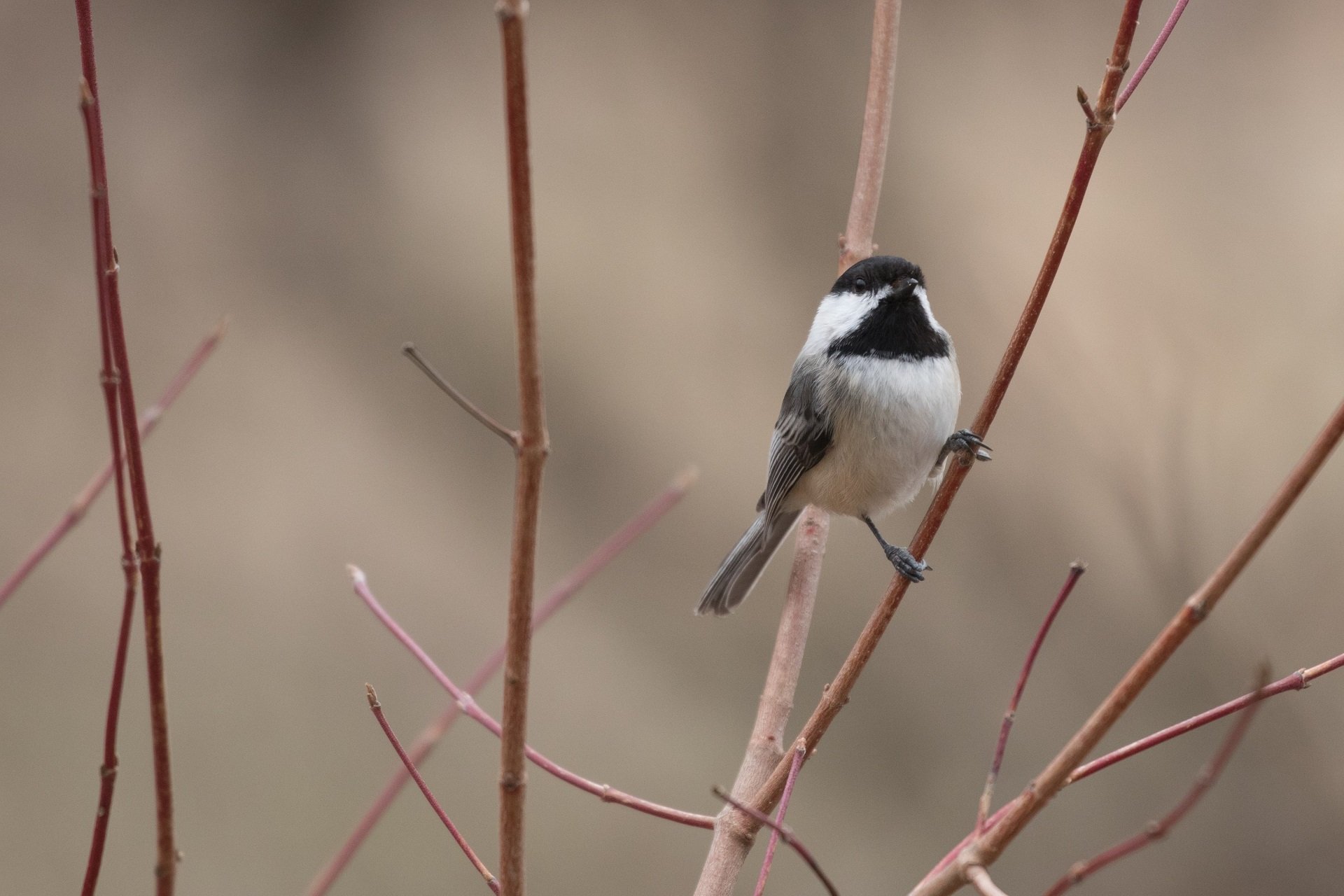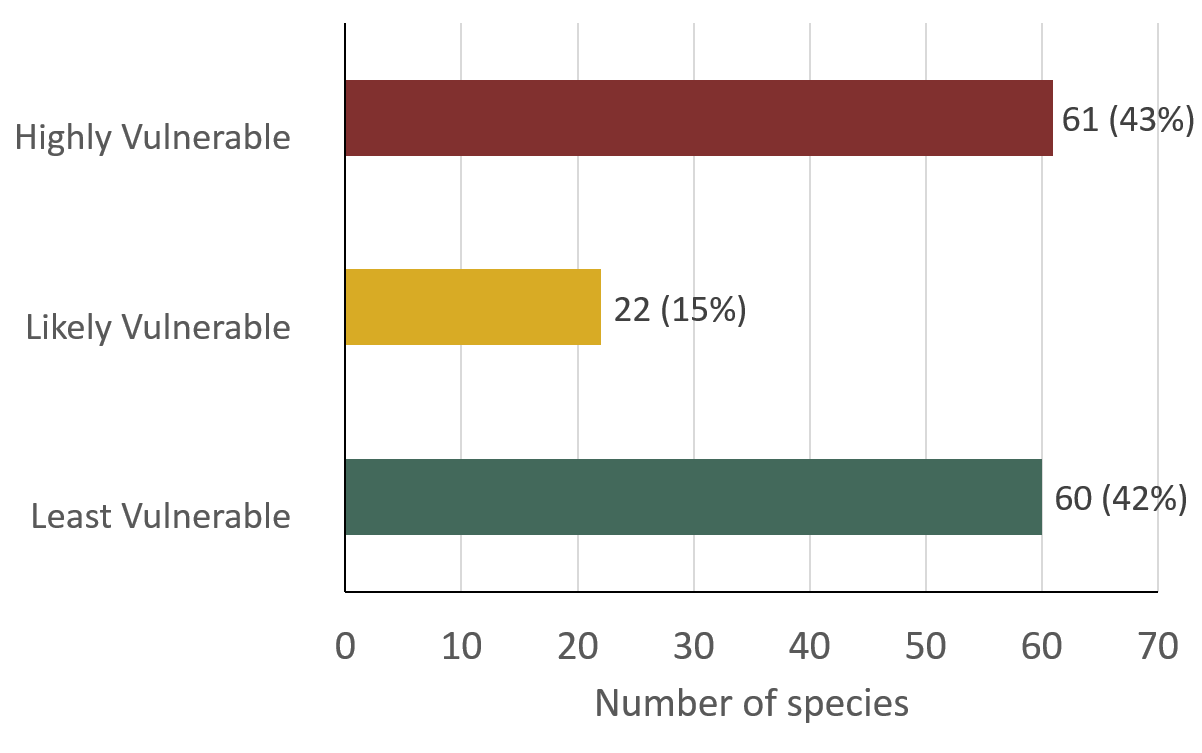State of the Birds Key Findings
Developing a report to summarize the challenges our birds face as the climate changes takes us onto new ground. Our previous editions of State of the Birds, released in 2011 and 2013, analyzed data from the field to provide evidence of how our bird populations had changed over time. Those reports looked to the past, measured changes, and identified priority conservation actions.
This report is an effort to look into the future. We use new data to establish the preferred climates for various bird species (their climate envelopes) and then use projections of the future climate to estimate how the distribution of each species’ climate envelope will differ from its current climate envelope distribution by the year 2050.
The changes in climate and sea level that we expect from a warming atmosphere include:
- Average air temperatures will be warmer throughout the year.
- Warm seasons will be longer and cold seasons will be shorter.
- More precipitation will fall as rain, rather than snow.
- Large precipitation events will be become more common.
- Growing seasons will get longer.
- Sea level will continue to rise and is projected to rise an additional 1 to 6 feet by 2100. Sea level rise has three components—expanding warmer ocean water, melting land ice, and, in some places, land subsidence.
- Oceans will become more acidic as carbon dioxide dissolves into the sea.
High Conservation Concern
The shifting climate is changing the fundamental way ecosystems work. Urgent action is required.
Mass Audubon’s previous research indicates 30% of our breeding birds are already declining and are in need of conservation action. Climate change will increase stress on many of those species, as well as additional species, and will do so in both predicted and unpredicted ways.
Our climate change projections estimate that 43% of the breeding species we evaluated are Highly Vulnerable to climate change by the year 2050.
Warmer winters cause shifts in the way that marine food webs work, which will cascade through the environment and affect fish populations, and in turn, fish-eating birds.
Increasing temperatures can affect the timing of important events, such as leaf and insect emergence. Those changes in phenology can cause declines in long-distance migrating birds as their arrival on their breeding grounds misses the periods of peak food abundance.
Species Stats
We evaluated 143 breeding species in this report.
- 61 breeding species (43%) are classified as Highly Vulnerable to climate change by the year 2050.
- An additional 22 species (15%) are classified as Likely Vulnerable.
- 60 species (42%) are classified as Least Vulnerable.
- 7 (70%) of the salt marsh-nesting species are classified as Highly Vulnerable.
- 9 (56%) of the coastal-nesting species are classified as Highly Vulnerable.
- 30 (49%) of the forest-breeding species are classified as Highly Vulnerable.
Coastal-nesting Species at Risk
Rising sea level will reduce nesting areas available for coastal- and salt marsh-nesting birds.
Increasing frequency and intensity of storms will contribute to overwash of beaches and salt marsh flooding, causing adding additional stress to coastal and salt marsh-nesting birds.
Increasing ocean acidification, caused by atmospheric carbon dioxide dissolving into the ocean, will cause large-scale changes to our shellfish and fish communities. Birds and wildlife that eat marine fish and shellfish will suffer from changes in the abundance of their prey.
Black-capped Chickadee is Highly Vulnerable.
The projected climate in 2050 could force some withdrawal for chickadees from the eastern part of the state. Other familiar birds that are Highly Vulnerable in the state, as well as in other continent-wide analyses, are the Yellow-bellied Sapsucker, Ruffed Grouse, Purple Finch, Magnolia Warbler, and White-throated Sparrow.
Urban- and suburban-nesting birds show the least vulnerability
For 77% (34 species), if climate is the only factor considered, projected climate changes contribute to stable or increasing trends by the year 2050. Some species will have expanding areas of suitable climate within Massachusetts by 2050.
Many of these are urban- and suburban-nesting species, including the Eastern Kingbird, American Robin, Ruby-throated Hummingbird, Blue Jay, Great Blue Heron, and Orchard Oriole.




